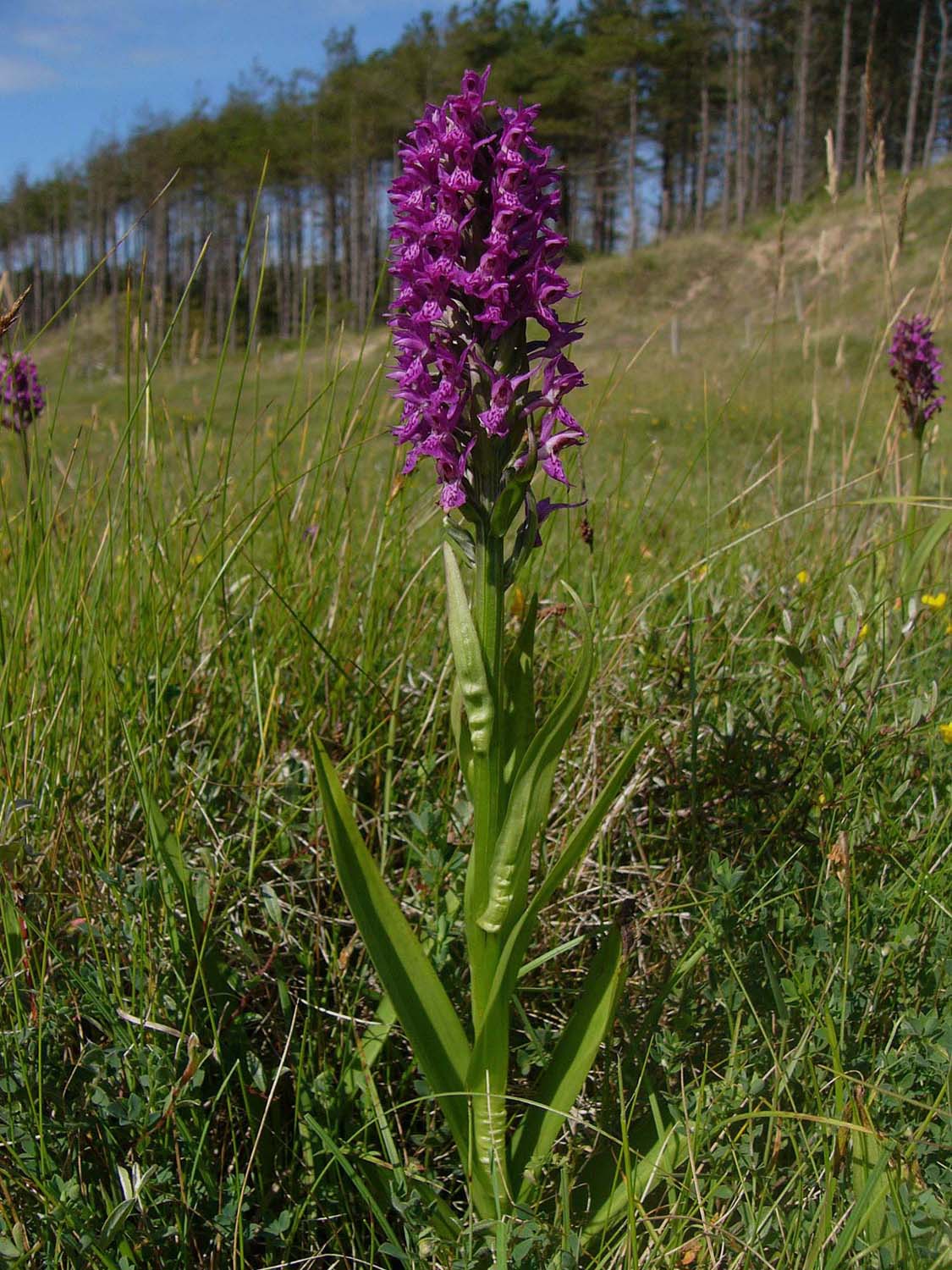
Dactylorhiza coccinea
Dactylorhiza ericetorum
Dactylorhiza fuchsii
Dactylorhiza incarnata
Dactlorhiza praetermissa
Dactylorhiza purpurella
Dactylorhiza traunsteineroides
Dactylorhiza viridis
Epipactis atrorubens
Epipactis dunensis
Epipactis neerlandica
Epipactis palustris
Epipactis phyllanthes Gymnadenia albida
Gymnadenia borealis
Gymnadenia densiflora
Hammarbya paludosa
Liparis loeselii
Neottia cordata
Neottia nidus-avis
Dactylorhiza ericetorum
Dactylorhiza fuchsii
Dactylorhiza incarnata
Dactlorhiza praetermissa
Dactylorhiza purpurella
Dactylorhiza traunsteineroides
Dactylorhiza viridis
Epipactis atrorubens
Epipactis dunensis
Epipactis neerlandica
Epipactis palustris
Epipactis phyllanthes Gymnadenia albida
Gymnadenia borealis
Gymnadenia densiflora
Hammarbya paludosa
Liparis loeselii
Neottia cordata
Neottia nidus-avis
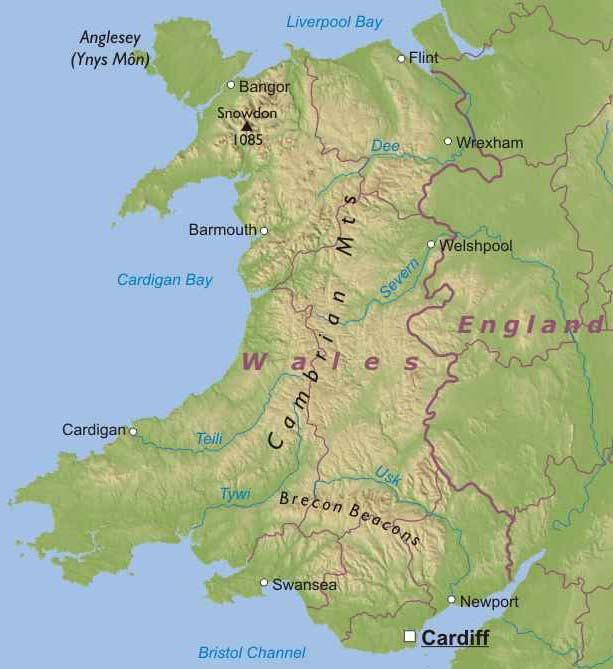
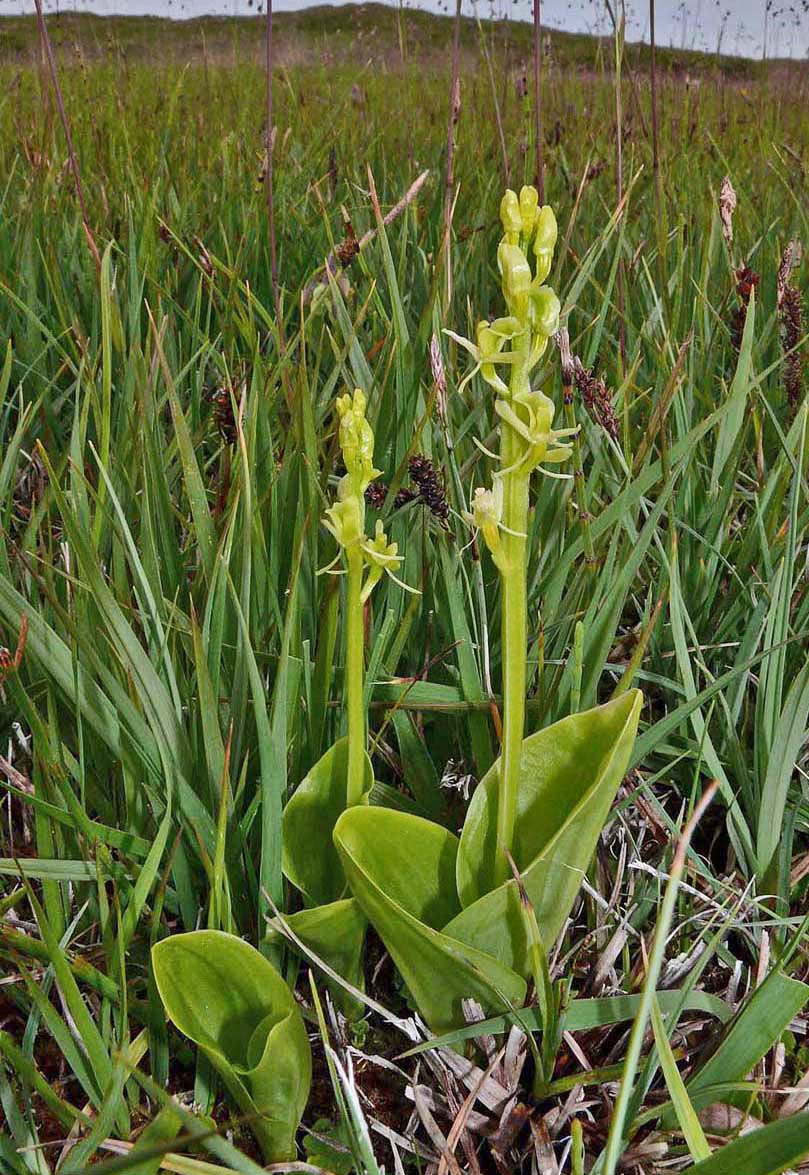
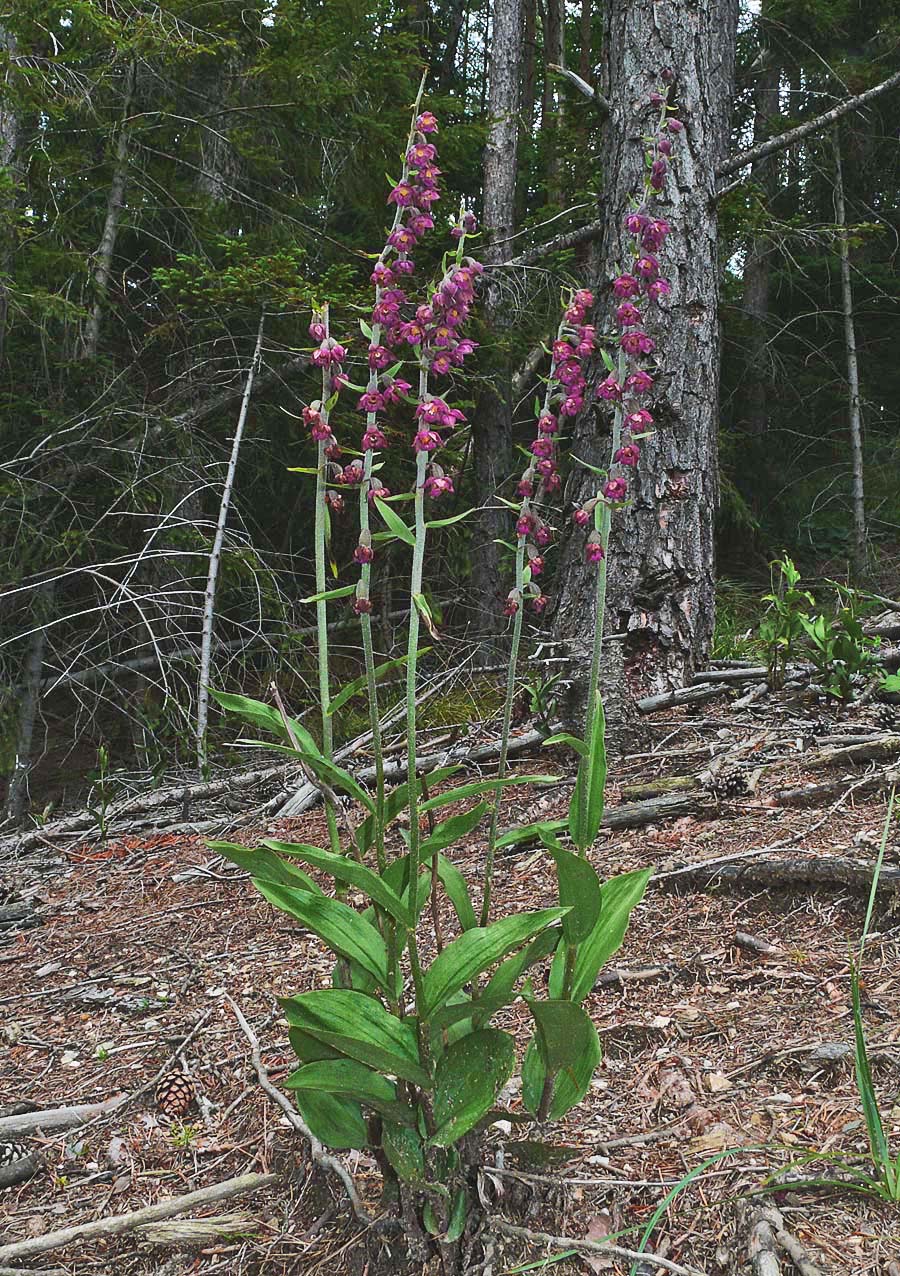
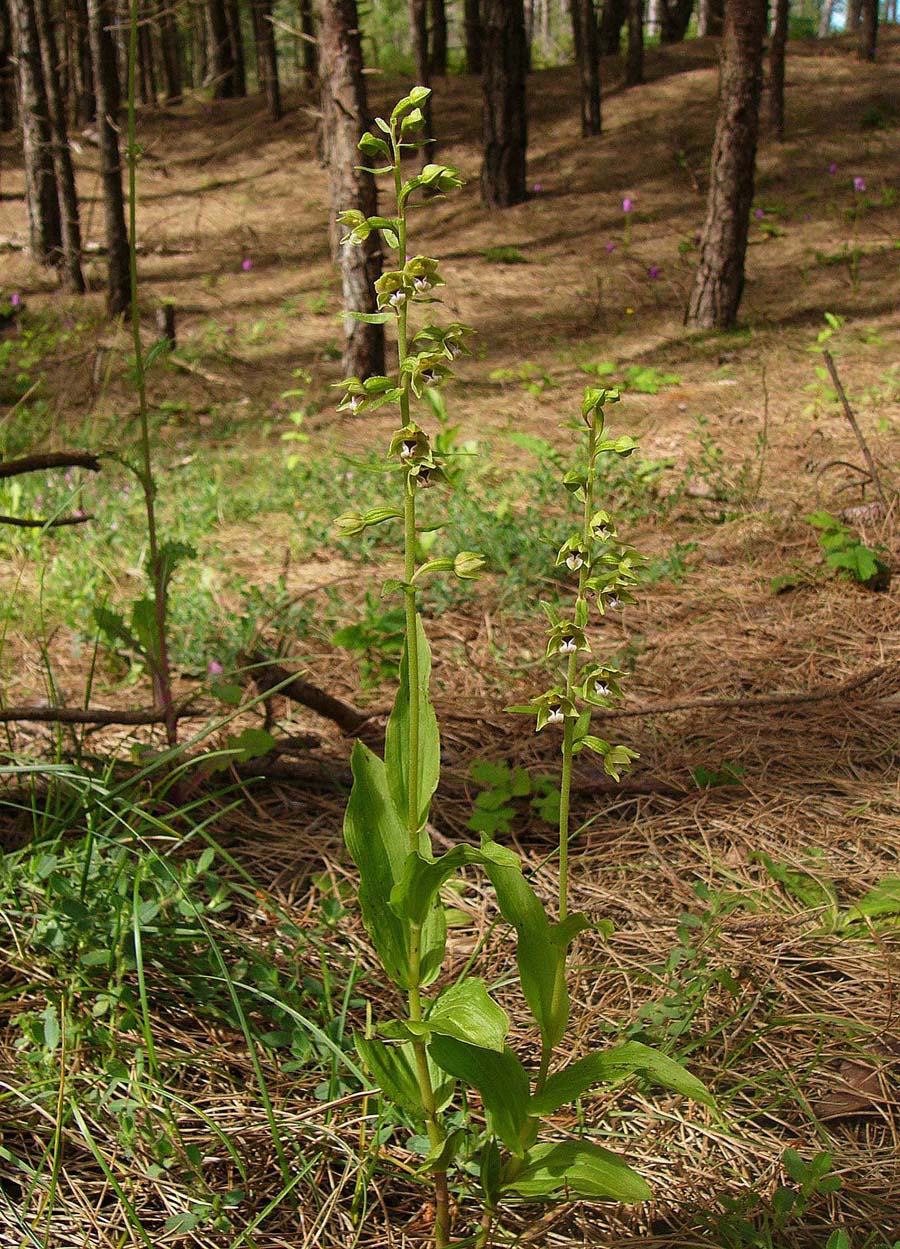
Areas of interest
Wales is a country of diverse habitats but which is dominated by the mountains and uplands which run almost unbroken north to south down its spine. Although these uplands offer magnificent scenery and are rich in wildlife generally, the mountain flora is somewhat impoverished, this particularly being the case in respect of orchid species. This is due largely to the predominantly acidic nature of the soils but also to large scale hill farming. The coastline however could not be more different and features, dramatic cliffs, extensive beaches and internationally important sand dune systems that give sanctuary to many of Great Britain's rarest plants, including orchids. The dunes of south and west Wales are exceptionally rich in species and perhaps the most noted of these systems is the National Nature Reserve at Kenfig near Port Talbot. The species list for this site is too extensive to fully record here but includes L. loeselii, D. praetermissa, D. purpurella, D. coccinea, E. neerlandica, E. phyllanthes and its curious form "cambrensis" whose taxonomic status has yet to be properly established.
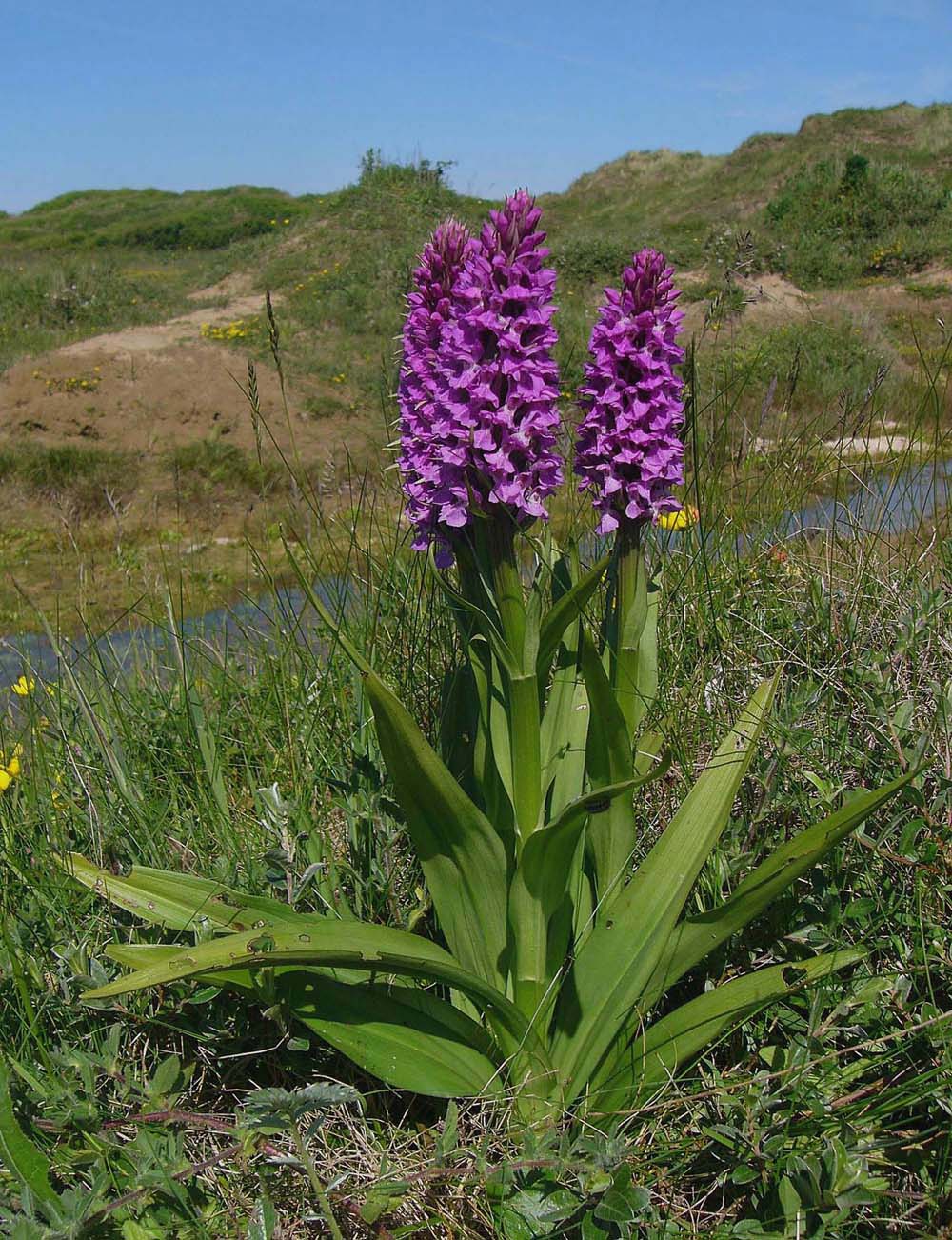
The island of Anglesey sits across the Menai Straits, off the north west coast of Wales and is a must for the orchid enthusiast with its diverse and wildlife rich habitats. Of these habitats, perhaps Anglesey's most notable and botanically rich landscape is the area of bogs located in the east of the island, which are considered to be of national importance and duly protected as such. These are the Anglesey Fens and are of special interest because of their curious geological composition, being alkaline fens set in shallow calcareous valleys, immediately surrounded by more typical acidic heath. The flora of the bogs is therefore very much calcareous in nature, comprising calcicoles such as Ophrys insectifera, Ophrys apifera, Gymnadenia conopsea and Neottia ovata. Another special orchid of these fens is Dactylorhiza traunsteineroides.
The other outstanding natural environment on Anglesey is once again a dune system and is to be found in the south west corner of the island. Newborough Warren is one of the largest in Wales and gives shelter to most of the dune dwelling orchid species already mentioned but with the important addition of the
the country and is an area noted for a collection of uncommon, sometimes rare calcareous species that cling to this oasis of alkalinity. From an orchid point of view, interest is largely focussed on Epipactis atrorubens which although not abundant, still finds a home amongst the rocks and cliffs.
Away from the coast Wales supports a good number of inland nature reserves founded and controlled by various national and local wildlife trusts. Two of these are of particularly interest as they protect orchid species scarce in many parts of the UK.
Gymnadenia albida (Small White Orchid) is an extremely uncommon species that is undoubtedly at its most frequent in Scotland, it does however exist in just a few, usually struggling outposts in northern England
and Wales. One such colony is to be found in central Wales at the Vicarage Meadows nature reserve run
by Brecknock Wildlife Trust. In recent years, the number of flowering plants has been in low single figures and visitors must take the greatest care when searching for them.
The second site I want to mention is again in central Wales and is actually a large privately owned estate within which there are several National Nature Reserves run by different organizations and not least the RSPB. The Elan Valley Estate is predominantly deciduous woodland and rough pasture with lakes (reservoirs) and streams. In the upland bogs Hammarbaya paludosa (Bog Orchid) is present and in the drier areas it is possible to find Neottia cordata (Lesser Twayblade).
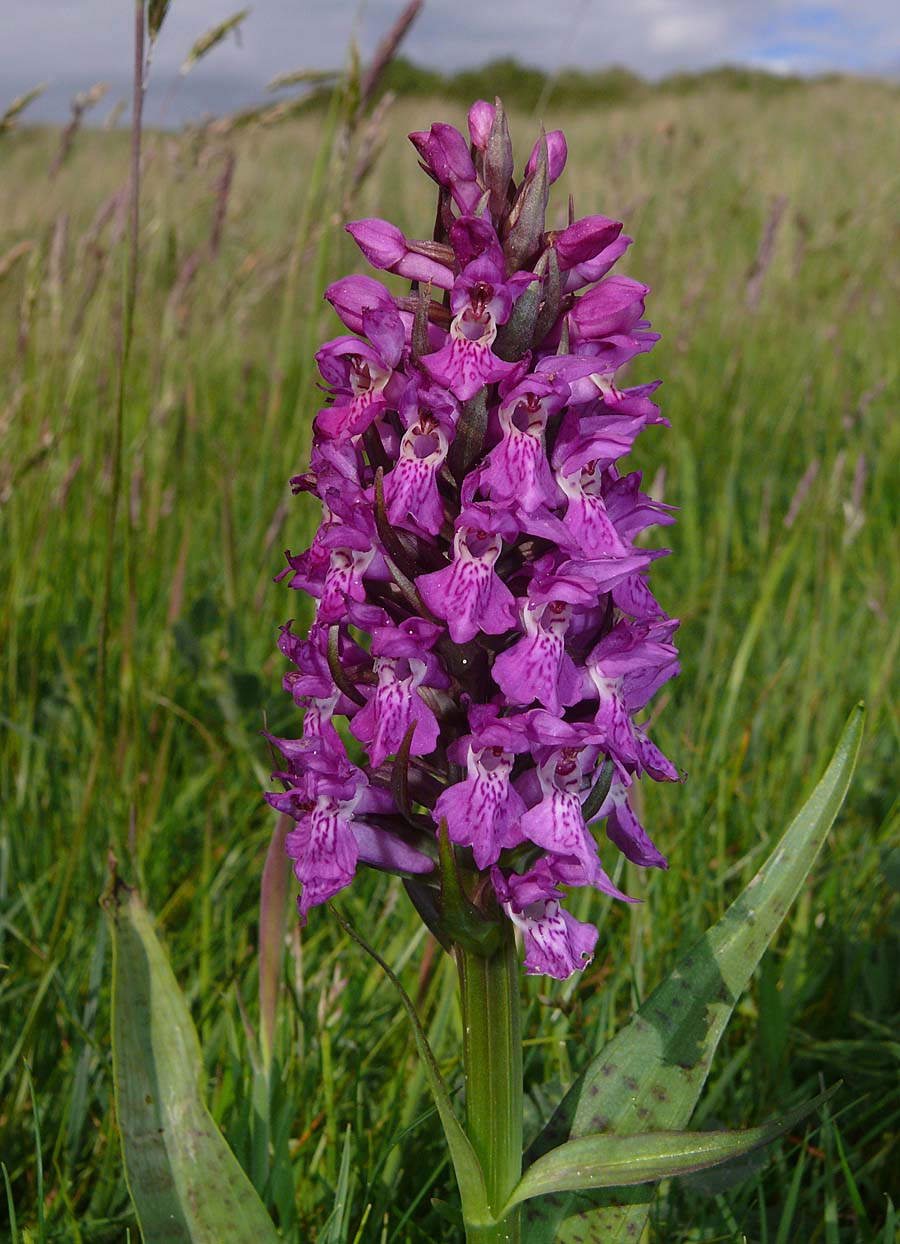
vv